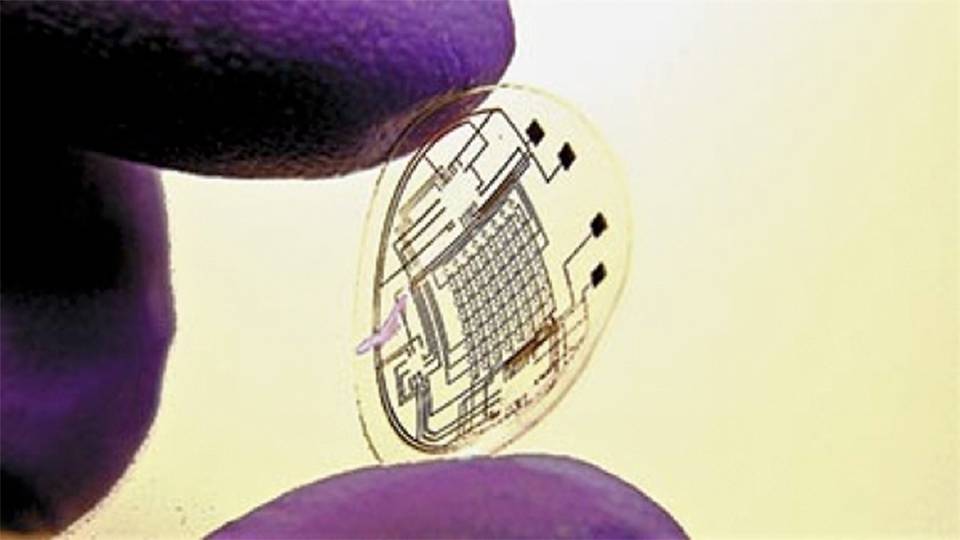Embedded Technologies: Power from the People
Energy harvested from our bodies will make possible mind-boggling gadgetry
Sensor-studded clothing worn by a soldier tracks his movements and vital signs. A disposable electrocardiogram machine the size of a Band-Aid monitors a heart patient. A cellphone is implanted in a tooth. Scientists and engineers are trying to develop such “embedded” devices: miniature electronics that plug people into computer and communication networks.
Consider contact lenses that function as computer screens. A University of Washington research team, led by electrical engineering professor Babak Parviz, has developed a prototype lens fitted with a tiny radio (for receiving data) and a light-emitting diode, or LED (for displaying data to its wearer). The technology has prompted comparisons to the computer readouts that flash in the eyes of the cyborg in the Terminator films.
In theory, the device converts electronic signals into ever-changing displays projected onto the contact lens and visible to the wearer, perhaps like a movie subtitle. If wirelessly connected to, say, a smartphone with voice-recognition software, a hearing-impaired person wearing such lenses might see a speaker’s words translated into captions.
But engineers developing such embedded technologies face a big obstacle: power. The devices pack so much gadgetry into such tiny spaces that even the smallest batteries would be too bulky, never mind the inconvenience (and potential discomfort) of replacing them.
To solve the power shortage, the Defense Advanced Research Projects Agency (DARPA)—the U.S. Department of Defense agency behind technologies that led to the Internet and the Global Positioning System, among other things—launched an Energy Starved Electronics program in 2005 with MIT. Researchers there have a new idea for powering embedded electronics: “scavenging” energy from the human body.
Obviously, our bodies generate heat—thermal energy. They also produce vibrations when we move—kinetic energy. Both forms of energy can be converted into electricity. Anantha Chandrakasan, an MIT electrical engineering professor, who is working on the problem with a former student named Yogesh Ramadass, says the challenge is to harvest adequate amounts of power from the body and then efficiently direct it to the device that needs it.
In the case of harnessing vibrations, Chandrakasan and his colleagues use piezoelectric materials, which produce an electric current when subjected to mechanical pressure. For energy scavenging, ordinary vibrations caused by walking or even just nodding your head might stimulate a piezo material to generate electricity, which is then converted into the direct current (DC) used by electronics, stored in solid-state capacitors and discharged when needed. This entire apparatus fits on a chip no larger than a few square millimeters. Small embedded devices could be directly built onto the chip, or the chip could transmit energy wirelessly to nearby devices. The chip could also use thermoelectric materials, which produce an electric current when exposed to two different temperatures—such as body heat and the (usually) cooler air around us.
Powered by our own bodies, embedded technology promises not only to provide data wherever and whenever we need it but to transmit real-time data about ourselves. A jacket fitted with heating pads or the thermostats in our homes could adjust based upon our body temperature.
Steven Feiner, professor of computer science at Columbia University, says by 2050 embedded devices will allow us to immerse ourselves in a sea of not just visual data, but also computer-generated sounds and sensations. “However, I think that most people will instead have the system filter what they see,” he says. “While on a walk in the woods, some folks might want to see overlaid species names.” Then again, he adds, “others will just want to turn it all off.”






















